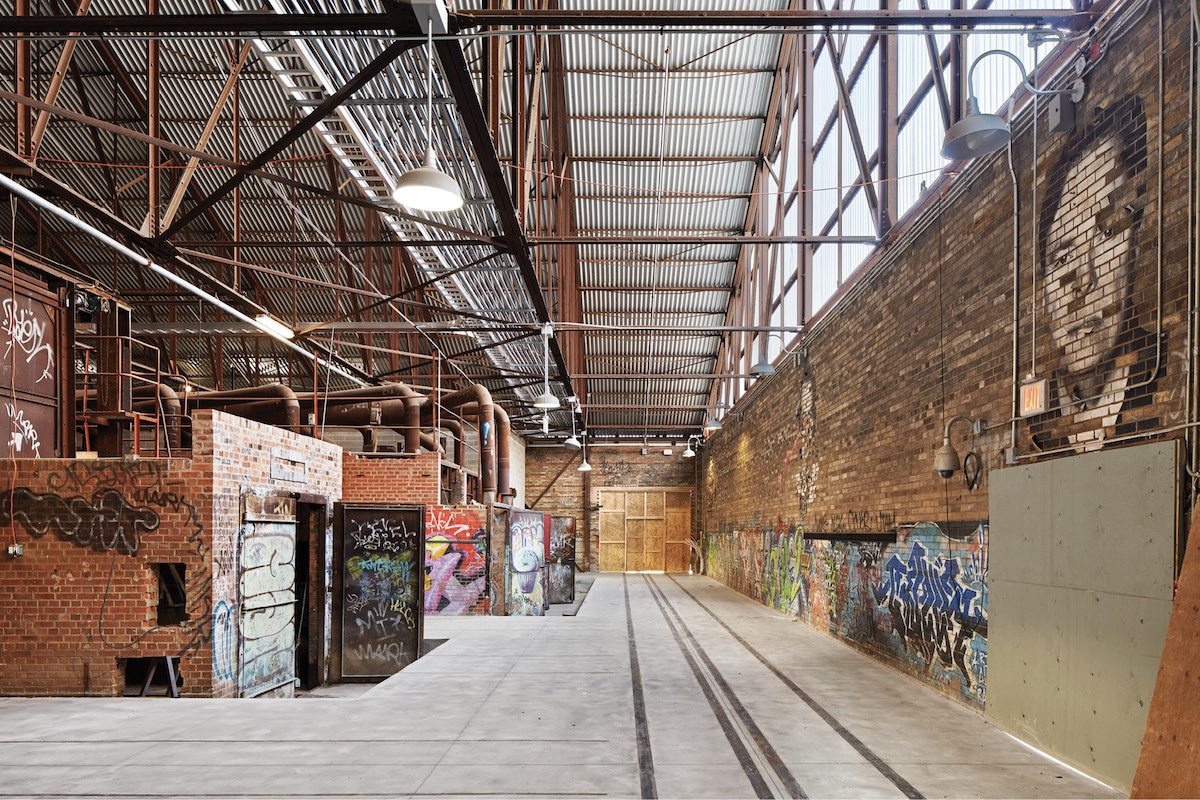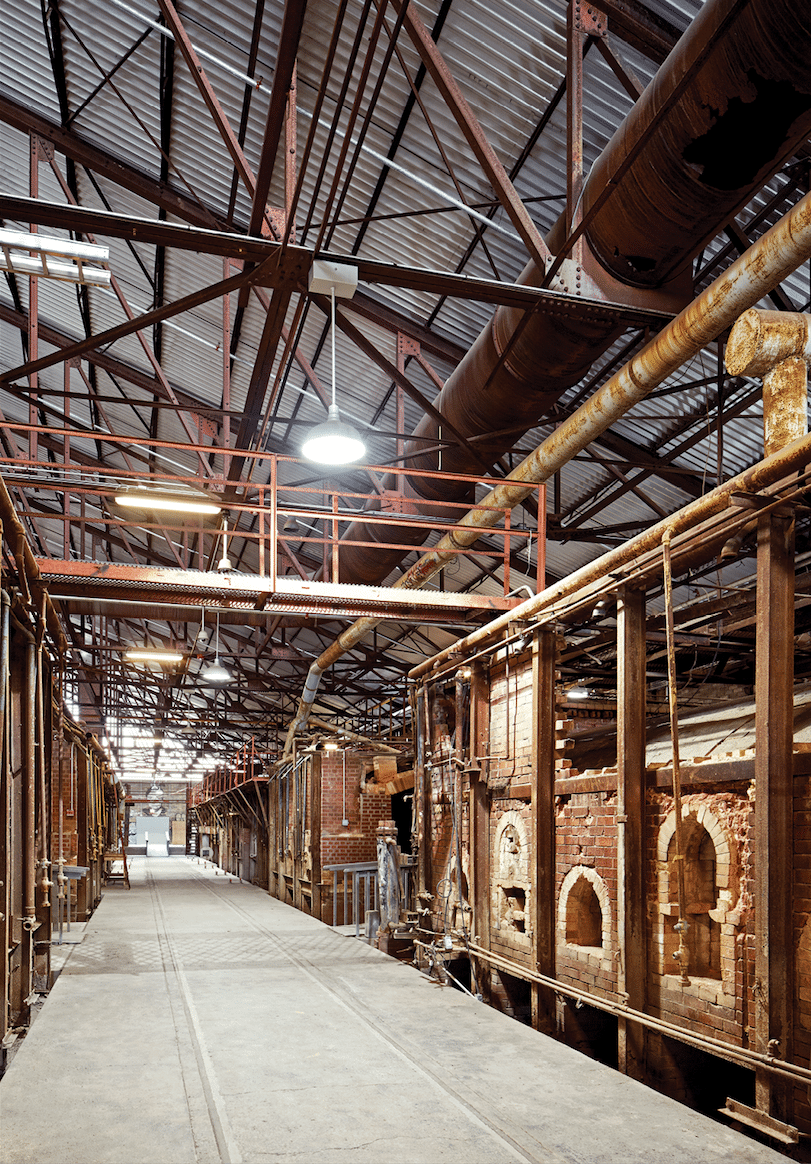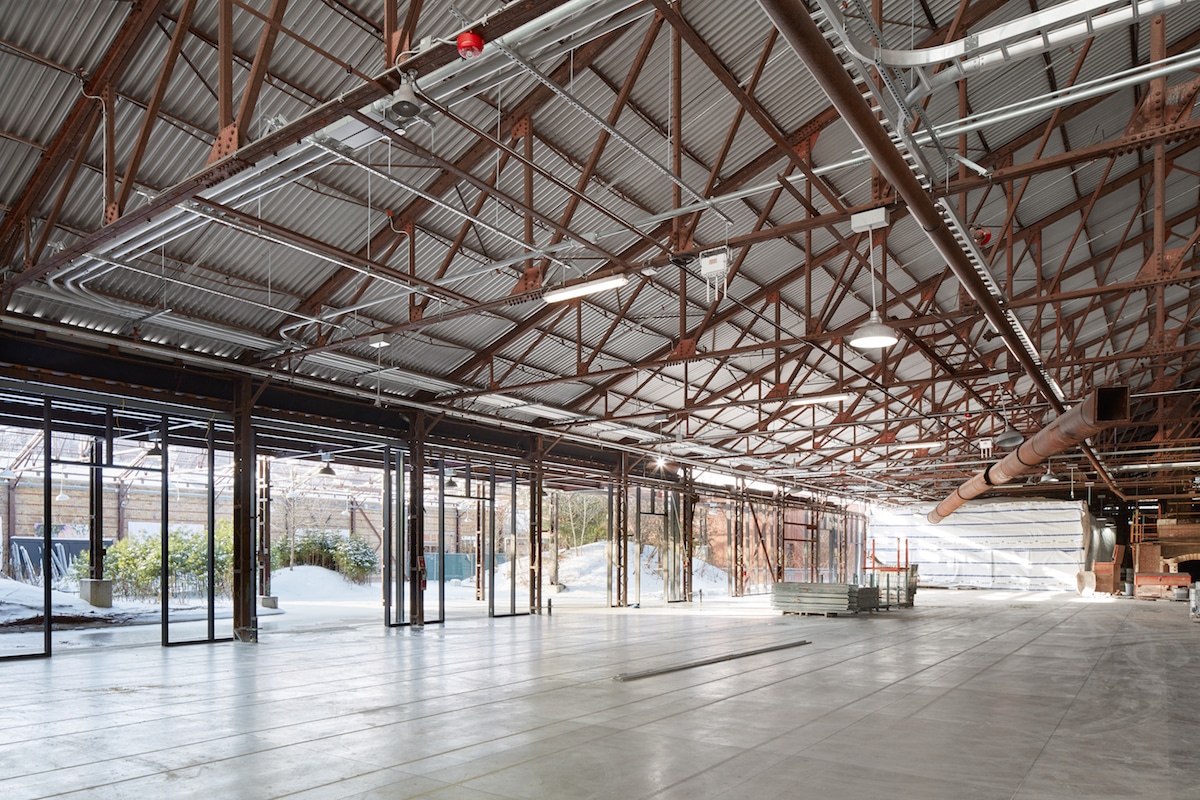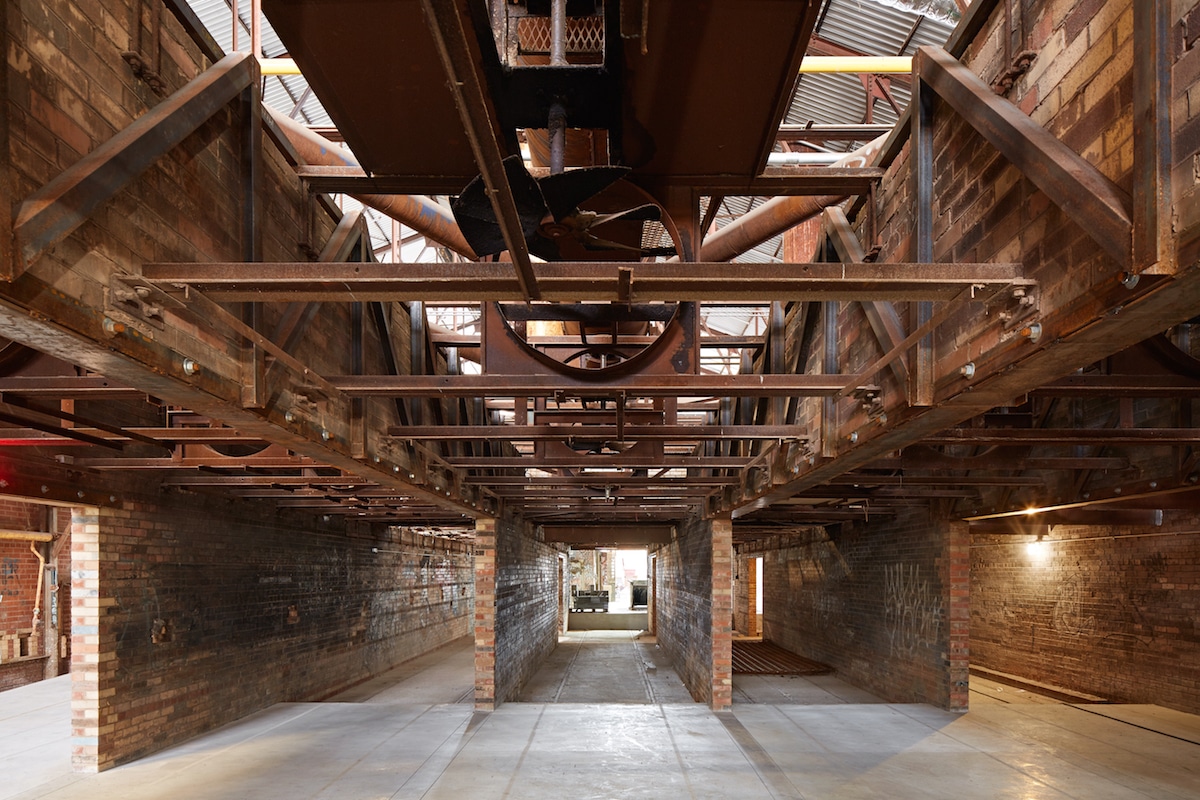
The design team intentionally left as much intact as possible at Toronto’s Evergreen Brick Works, including graffiti that accumulated over the years. [Photo: Ben Rahn / A-Frame]
LOCATION: Toronto SIZE: Approximately 53,000 square feet COST: $6.5 million COMPLETION: 2018 ARCHITECT: ERA Architects & LGA Architectural Partners CONSTRUCTION LEAD: EllisDon MANUFACTURING PARTNER: CRH Canada
The Evergreen Brick Works site has quickly become a point of pride for Torontonians—an abandoned brickmaking factory in the center of a verdant valley was repurposed in 2010 as a progressive community center, with farmers’ markets, sustainability and nature workshops, and even picture-perfect weddings. But there was one key aspect of the site that remained relatively untouched: the Kiln Building, which historically held the kilns that fired the bricks made here until the site was shuttered in 1984.
Now it’s the Kiln Building’s turn for revitalization. In 2017, Evergreen brought together LGA Architectural Partners, the City of Toronto’s Heritage Preservation Services, Ontario Heritage Trust, and the Toronto and Region Conservation Authority to retrofit the building through an innovative carbon-neutral design. Phase 1 of the project was completed in spring 2018, allowing the Kiln Building to reopen as an event and educational space. Phase 2, which includes installation of a solar panel system and creation of a Kiln Gallery, began in the summer. The Kiln Building will be the national hub for Future Cities Canada, a new city-building initiative launched in 2018.

[Photo: Ben Rahn / A-Frame]
A Rich Heritage
Built in the 1950s and designated as a heritage structure by both municipal and provincial authorities, the design team decided early to leave as much intact as possible. “Our approach was to take an ultra-light touch,” says Drew Adams, the project architect. “The building was just so incredible to begin with. How do you negotiate really celebrating this long history of the site while thinking about the future history of the site and laying the groundwork for that, which is this phenomenal environmental community center in the heart of Toronto? As well as being historic, it’s also very young.”
But that ultra-light touch also needed to accommodate a commitment to sustainability, as evidenced in the other buildings on the Evergreen campus. “LEED, passive house, and net zero didn’t really make sense,” Adams says. “So we started thinking about carbon neutral.” To achieve that, the building’s heating and cooling systems make liberal use of solar and geothermal systems. Compared to a conventional approach, this system is predicted to eliminate 647 tons of carbon annually.

[Photo: Ben Rahn / A-Frame]
A Greener Footprint
In a particularly innovative twist, the Kiln Building team is also factoring in carbon offsets for the entire construction process, including the electrical load. “EllisDon has been tracking the power it takes to power equipment and deliver things,” Drew says. “We’re trying to encourage people to not just look at the footprint of the materials but also the construction process energy—which is really interesting.”
Faithful to the preservation of the original building, the amount of new construction is actually quite small, which has helped to limit the footprint. But some of the new infrastructure includes piping, lighting, raising the floor, and one of the largest gender-neutral bathrooms in the province.
SEE ALSO: Toronto is Undergoing a Sustainable Transformation

[Photo: Ben Rahn / A-Frame]
Facing Challenges
The challenges on the site are manifold, including frequent flooding due to the building’s proximity to the Don River and several open-air sides that limit the ability to both condition and warm the space. Evergreen also sought to preserve much of the space’s graffiti, reflecting the significant period of time when the building was vacant.
But the building’s purpose—chiefly, community and educational events—has given designers greater flexibility in their range of options. “It’s not intended to be conditioned as a Class A office space year-round,” Adams says. “It’s going to be a little warmer in the summertime and a little cooler in the wintertime. Evergreen is going to tell people to bring a coat for winter events. It’s a huge shift in the design philosophy, but it’s based on the idea of heating and cooling people, not spaces. This is about changing the conditioning of a building, but it’s also about changing frames of mind.”
They ultimately settled on radiant in-floor heating and cooling, with a solar thermal system of almost 300 panels that ties into a geothermal system of almost 50 boreholes dug 50 feet deep. “They asked us to do something really ambitious on the sustainability front, and we spent a lot of time talking about appropriate standards for a one-of-a-kind building,” Adams says.
The Evergreen campus continues to evolve, and Adams says the Kiln Building has inspired new ways of thinking about how to make the campus’ other structures net zero. “The first building was Platinum and that seemed really appropriate for the time and place, and now ours is carbon neutral,” he says. “A third building seems to lend itself to a passive house approach, and another could work with a double-skin curtain wall outside the original brick building. Maybe it’s not that all of your buildings are LEED, but you might look to build a whole campus of high performing buildings.”

